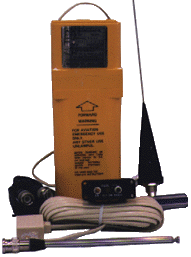September 8, 1976 Congress amended the Federal Aviation Act of 1958 to include the Emergency Locator Transmitter Act. Emergency Locator Transmitter Act - Directs the Administrator of the Federal Aviation Administration, pursuant to the Federal Aviation Act, to establish reasonable rules and regulations governing the installation and operation of emergency locator transmitters or other devices that serve the purpose of locating aircraft that terminate flight as a result of an accident. The installation of 121.5 and 243.0 MHz ELT's in the general aviation is to aid in locating missing aircraft. The 121.5 MHz ELT's were originally designed to be detected and located by overflying aircraft and fixed radio receivers.
However, spaceborne instruments are now the primary sensors. Soon after the implementation of the ELT installation requirement, it was discovered that many distresses were not being detected. Consequently, NASA initiated a research and development program to determine if ELT signals could be detected and located from space. The NASA research program, which was conceptualized and originally developed at Goddard, has proved to be successful and has played a vital role in saving lives. The program has evolved into what is known today as the Search and Rescue Satellite-Aided Tracking (SARSAT) System. This system provides for location of the old-technology ELT's (121.5 MHz) as well as the new 406 MHz ELT's. (Listen To What It Sounds Like When A ELT Goes Off)
